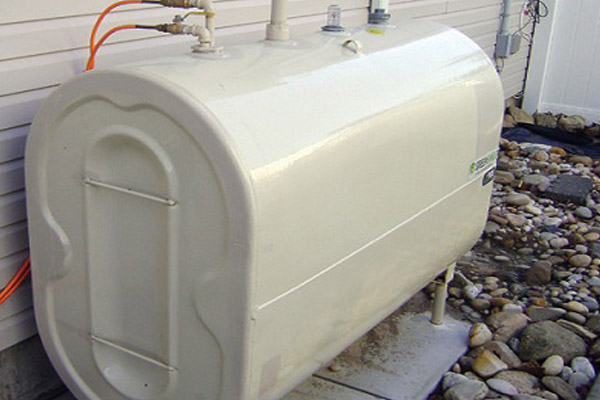Can I Put Diesel Fuel in My Home Heating Oil Tank?

Cold winters are part of our lives when you live in southern New Jersey. However, even the most seasoned homeowners from the area can experience temporary setbacks. The one setback we all hope to prevent the most is our heating oil tank running out of fuel for our home heating. The good news is that the standard turnaround time for heating oil delivery is within three business days. Local oil distributors may also offer faster services, such as same-day emergency oil deliveries. However, this relies on road conditions, weather, and other circumstances. There may be times when you have to use heating oil alternatives.
Sometimes the weather and your family’s heating needs at home must take priority. It can be dangerous to go without heat at the peak of the winter season. Diesel fuel may be what you need to keep your home warm, but it isn’t a simple fill-and-go process. This article discusses all you need to know about what to do before you put diesel into your oil tank.
Can I Put Diesel Fuel in My Home Heating Oil Tank?
Contents
Keep reading for a comprehensive guide on what to do if your furnace or boiler runs out of fuel oil in the middle of winter.
Inspect Your Home Heating Oil Tank

One of diesel’s largest drawbacks is it is taxed differently compared to heating oil, making it more expensive. It is crucial to first ensure you require an alternative to your home heating oil. Therefore, you have to inspect your oil tank first before making this short-term switch.
Inspecting the floating gauge is the most common method of checking the oil level in your system. The gauge floats on oil so you can tell how full or empty your tank is. Verify the float’s accuracy by removing the plastic covering it and pushing it down using your hand. The gauge will return to its original place if the tank contains oil at a proper level. A gauge that remains down translates to an empty tank of oil.
You can also try manually checking your oil level. Use a yardstick and dip it into the tank’s fill tube. Depending on the size, all tanks will have different critical levels of when they need a refill. Confirm your tank’s critical level with the tank manufacturer. You should always schedule an oil delivery when the tank reaches below 1/3 to 1/4 full.
You may want to go ahead and fill your tank with diesel if your tank indeed ran out of oil. If not, let the sediment settle at the base of the tank and do a burner reset to start it. Some cases require bleeding the line, so the air caught in the system can escape. This may be a necessary step to help the tank restart. It is a messy and highly involved process, so it is recommended that you seek professional assistance if you choose to do this.
Dangers of Running Low on Fuel Oil

Heating system shutdown is the biggest danger that can happen if your system runs at low oil levels. Many people do not realize how quickly this issue can occur. Most systems will shut down once the tank reaches the critical level and before you completely run out of heating oil.
Many reasons can cause the system to shut down, including sediment buildup at the tank’s base. Sediment buildup usually occurs in tanks that haven’t been cleaned properly. In addition, many tanks are equipped with feed lines running from the top of the tank downward. Pipes that do not reach the bottom mean you may run out of fuel before the tank completely empties.
Diesel as a Heating Fuel Alternative: Safety and Uses
You can begin using diesel when you are sure your tank is either below critical levels or completely out of heating oil. Diesel is an excellent heating alternative but should only be used for a short period. Heating oil is always the better choice.
Other than being more expensive, diesel burns hotter than standard heating fuel. This isn’t a big problem when diesel is used as a temporary solution for a few days at a time. However, if used any longer, it can cause lasting damage to your heating unit as it wasn’t designed to handle higher temperatures. Using five to ten gallons for several days should keep the longevity of your tank.
The total diesel amount you need depends on how long it will be until your heating fuel delivery arrives. You shouldn’t need more than 10 gallons per day at most.
Make sure that the diesel is kept in a properly colored and labeled container. Yellow containers are used for diesel storage. This may only be a temporary fix, but diesel can be safely stored for six months at a time before it degrades and is unsafe to use. Additives can be added to the diesel to extend its life, but they also come with limitations and necessary treatments. Therefore, you still shouldn’t store diesel for too long.
If you will not use the diesel fuel for anything else after using it in your oil tank, you need to dispose of the diesel properly. Call your local municipality so it can be disposed of through hazardous waste collection centers or recycling centers.
How to Safely Use Diesel Fuel in Your Home Heating Oil Tank

After picking up your diesel in correctly marked yellow canisters, you can start filling your tank.
- Turn the heating system off: Ensure that your heating system is turned off completely. Use the heating unit’s thermostat control to accomplish this task.
- Add the fuel: Add as much as 10 gallons or more of diesel into the tank. You can mix it with the leftover fuel, which is better because it means the tank didn’t fully dry. If the tank becomes completely empty, you may have to bleed the lines to remove the air and ensure that the nozzle, oil pump, and filter are free of sludge. If you are unsure of how to do these tasks on your own, catch this issue before your tank runs out of oil, so you save time and additional steps.
- Wait for the settling: Leave the tank to sit for 10 minutes after filling it with fuel so the sediments and impurities can settle to the bottom.
- Turn the heating unit back on: Turn your heating system back on. Your home will have heating as it normally does until you can use heating oil again.
Get Emergency Fuel Delivery With McAllister Energy
Call McAllister Energy if your tank has low oil levels and you do not have an alternative to heating oil on hand. McAllister Energy proudly serves Camden County, NJ, with emergency fuel delivery services so homeowners do not have to worry about running out of oil during winter. Request emergency oil services from our company to receive a quick solution. Our emergency delivery services usually have a turnaround time of 24 hours or less, so you wouldn’t need to use diesel for home heating longer than necessary.
Consider signing up for our automatic fill services to prevent your tank from emptying in the future and get a discounted rate on fuel. Rest assured, our services can help keep your tank full, and your maintenance needs low.
Call McAllister Energy For All Your Home Heating Needs

For all your HVAC and oil delivery needs, contact McAllister Energy. We have some of the most highly qualified and professionally certified technicians in Camden County. NJ. Each of our friendly techs can conduct all kinds of HVAC services, such as oil tank upgrades, boiler repair, ductless installations, furnace replacements, and more. We have various oil delivery plans and financing options. This way, you can customize your fuel deliveries to meet your needs. Our heating oil delivery and HVAC services are affordable and are done accurately and promptly at all times. Click here to view our service area.
All of our services come with a guarantee. Our HVAC maintenance services improve your energy efficiency and home comfort while decreasing your HVAC costs. We can also assist you when you need to replace your heating and cooling system. We will help you find the best make and model for your home without sacrificing your budget. Our experts have the skills, training, and experience to ensure that all your home comfort needs are met. Book an appointment with us today. Call McAllister Energy for a free, in-home estimate.
You can click here to contact us now or call us at (856) 665-4545 to find out more!